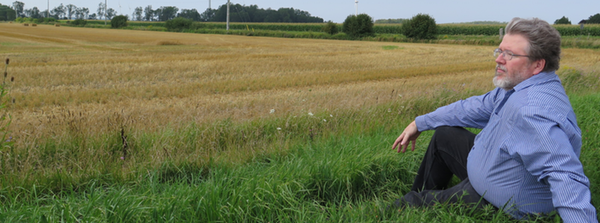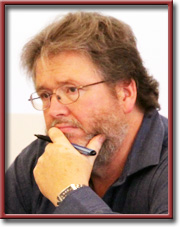Recollections of a Child from the First Nuclear Age
“A regular camera shutter tripped at the initiation of a nuclear blast would deliver only a negative, assaulted by light so overwhelming that all detail is annihilated, leaving pure dark. Images of nuclear explosions had to be taken at very high speeds and at a distance that would ensure the survival of the equipment and the film it housed. Most of the iconic photographs of nuclear blasts record the moments after the flash; the roiling but stately buildup of mushroom clouds lit by the glow of superheated air. But the light which rendered normal photography impossible was itself, paradoxically, photographic. In Hiroshima, the image of a man was fixed in the concrete of a sidewalk while the pavement around his shadow was bleached in the millisecond in which he was vaporized.”—William Ramp
Small Things Recollected
By William Ramp
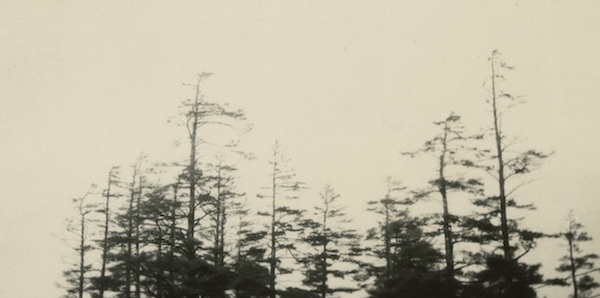
LETHBRIDGE Alberta, Canada—(Weekly Hubris)—6/1/2015—The following reflection is the second of two interim pieces between the “Plains” series I wrote this past year, and a forthcoming conclusion to that series.
My editor has asked me thereafter to reflect on and write about very big issues; the prospect of human survival in the face of climate change, and how we could or should face that prospect.
This week’s column, though written largely from an individual, biographical perspective, addresses what was perhaps the starkest question of species survival in the previous century: the threat posed by massive stockpiles of nuclear weapons. We would be fools to think that the possibility of nuclear war is now passé. We would also be fools to imagine such a possibility to be unrelated to the geopolitical crises that may well attend the human consequences of climate change.
In a 2014 article, “Honey, You’re Scaring the Kids,” Rebecca Onion wrote about the impact of The Day After; a 1983 TV movie depicting nuclear warfare, on a nine-year-old child:
In the fall of 1983, a TV movie ruined Alexander Zaitchik’s ninth birthday party. He wasn’t supposed to see The Day After, a two-hour film set in Lawrence, Kansas that follows a cast of everyday American characters into and through a nuclear strike, but he lingered at the top of the stairs as his family watched, catching snatches of the images and sounds.
Recalling the event years later, Zaitchik remembered his eight-year-old self anxiously playing through the circumstances of a nuclear attack. “If it happens in the afternoon, do we run toward home, or away from the city and the blast? If it happens at night, do we let our parents huddle over us in the basement, or do we stand on the rooftop, chests forward, praying the first shock wave dematerializes our family without pain?”
Preoccupied, Zaitchik wrote, he barely noticed his birthday celebration. “It was the first birthday party I felt no excitement over. The ice-cream cake was tasteless. The Return of the Jedi action figures I unwrapped were pieces of plastic, destined to burn up with everything else.”
From the poignant voice of that former child, Onion moves on to adult debates about exposing children to such imagery. But let’s linger just a moment over that word, “exposure.” Its 20-century uses point to symptomatic vulnerabilities of the age. Exposure to risk, or harm. Exposure of evils masked by propaganda or ideology. Exposure of public reputations to sudden disgrace. Exposure of previously unremarked forms of discrimination or exploitation. And also—this being the pre-digital era—the exposure of film to light in order to document these other exposures.
Photographic film exposed to invisible radiation fogs and delivers no image. And a regular camera shutter tripped at the initiation of a nuclear blast would deliver only a negative, assaulted by light so overwhelming that all detail is annihilated, leaving pure dark.
Images of nuclear explosions had to be taken at very high speeds and at a distance that would ensure the survival of the equipment and the film it housed. Most of the iconic photographs of nuclear blasts record the moments after the flash; the roiling but stately build-up of mushroom clouds lit by the glow of super-heated air.
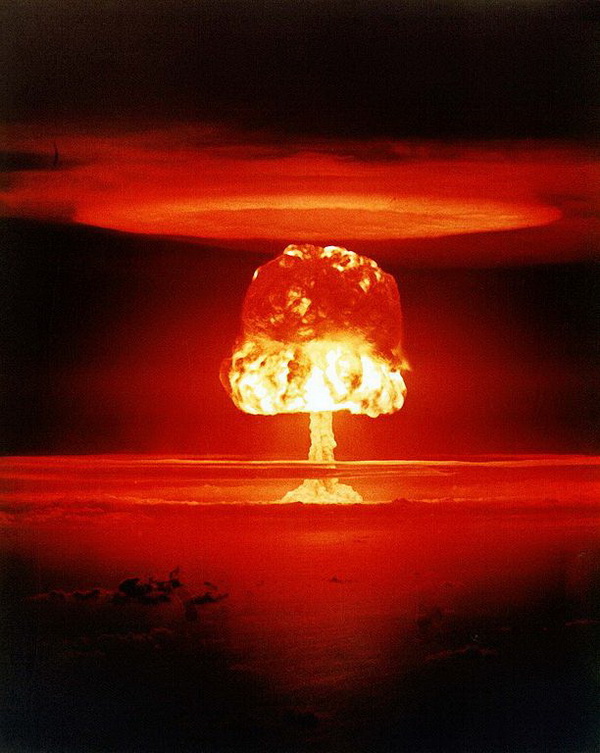
But the light which rendered normal photography impossible was itself, paradoxically, photographic.
In Hiroshima, the image of a man was fixed in the concrete of a sidewalk while the pavement around his shadow was bleached in the millisecond in which he was vaporized.
These “nuclear shadows” borrow meaning from the passage of the sun over the surface of the earth; its illumination patching and shifting as it meets people, things, and geographic features that temporarily block it from surfaces. But, as Matthew J. X. Doyle has pointed out, this semantic transference is inadequate to its task:
Unlike shadows cast by the sun, the shadows at Hiroshima can never tell time, only their position in space relative to the 360º of the blast radius. Indeed, when the US armed forces occupied Japan, surveyors utilized the radiation shadows to pinpoint exactly where the blast took place. They are images cast in timeless time. They testify to an instant that overpowered the sun, capturing a moment that resembles death without being death. Because their portrayal of violence is not explicit, these images are evocative: photogenic.
But what they evoke is precisely absence; that which is no longer, and also that which cannot be represented.
[A] photograph is of the world whereas these radiation flash burns (like most shadows) are in the world. The force that created them is not the violence of sadistic cruelty, of butchery that excavates the interior of a subject. It was the same radiating force that caused anonymous vaporization at the blast’s hypocenter, though its energy had been lowered by movement through air. As such, these flash burns possess a facture* of mourning: the architecture bears a real relation of dissociative violence, while to our eyes the forms of the shadows become metaphors for disappearance. . . .
By extension, if we consider our moral faculties as both directive and also receptive, these images evoke what must not be represented, aestheticized, or made sense of. They may, in a limited way, be narrated, but cannot be pulled into narrative meaning without ethical violence. Matthew Doyle, again:
“[T]he moment of the detonation of the atomic bomb at Hiroshima presents an almost total absence of representational logic. Long before “Little Boy” fell from the Enola Gay, it was engineered to blindly destroy everything in its path in an instant. The shadows at Hiroshima testify to the automatism of this blinding force, and its indelible mark on the visible world. The moment of the detonation where 70,000 men, women, and children perished in seconds defies our idea of narrative time. In this absence of narrative and logic, the images cast in thermal shadow on the walls beckon us to the presence of the imperceptible, the unseen: the absent, invisible victims of the disaster. The same blindness was inflicted upon Hiroshima, as the lightning flash of concentrated energy burned the retinas of those with their eyes open . . .”
Now, then, re-imagine, children watching filmed messages, however fictive, concerning the aftermath of such erasure. Their eyes, a camera’s lens. Their minds spooling lengths of plastic coated with emulsion and silver halide. Could the televisual message be recorded in ways that encouraged awareness and reflection? Or would a more accurate metaphor be Marshall McLuhan’s description of electric light as pure, ungraspable information? Would such images communicate One Thing Only: inability to imagine; annihilation of a basis for reflection, for coping, for any possible sane response?
Disagreement over the effects The Day After might have had on children tended to polarize on right-left lines, in ways similar to present-day controversy about the affective consequences of climate-change messaging. Then, as now, a narrative juxtaposition of innocence or blind complacency with stark questions about human survival generated existential discomfort and politicized discord over the uses of anxiety. Such conflicts reflected and reproduced contrasting images of the exposed child.
Did imagery of a nuclear holocaust arm children against complacency or infect them with ungovernable fear and erase their capacities for reflection, action, and emotional resilience?
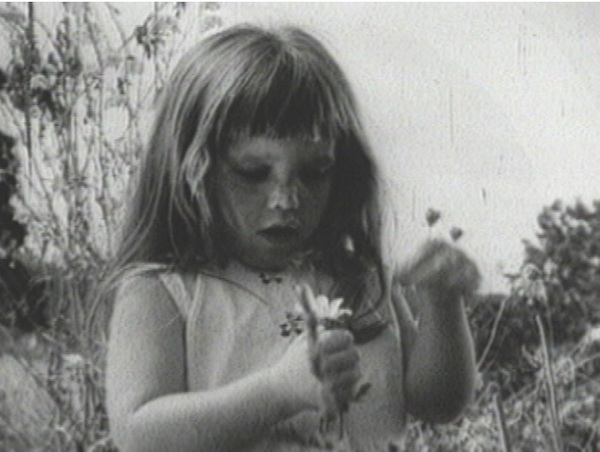
Such controversies led easily to others, about the place and role of emotion in public discourse, and about the value to be placed on the feelings of children, and of the women who parented them and spoke on their behalf.
Discussions of the movie’s impact revealed sharp lines separating conservative voices who preferred to steer clear of what they termed emotional reactions (or, as William F. Buckley, Jr. put it, “junk thought”) in policy discussion, and activists who found a bloodless conversation about nuclear deterrence to be dangerous and inhuman.
Rebecca Onion notes that both conservatives and liberals, if in quite different ways, used—and still use—children as things to think with, judge with, and feel with. Children and childhood furnished adult voices. The child was reduced through condensed imagery into a Romanticist innocent and truth-teller on one hand and, on the other, to an irrational domestic dependent:
“For both sides, children’s fears stand in as a proxy for all of our emotional responses around issues of apocalyptic risk: our ‘hysterias,’ nightmares, and forebodings. The idea that conservative ideology is free from such responses is part of a self-presentation deeply rooted in ideals of rational masculinity. Kids are afraid; moms are afraid; therapists make soothing noises; men know the truth of the risks, see the real possible futures, and act accordingly.”
While the characterization of children’s fears today may still resemble what was said about them in the 1980s, Onion claims that there was something new in the 1980s debates compared to those 20 or 30 years earlier.
There was fear of nuclear war in the 1950s, and also worry about children being colonized by that fear. But the anxieties of the 50s “didn’t translate into political action,” and political discourse early in the Cold War “invoked childhood . . . to strengthen national consensus,” rather than to question the very premise of nuclear warfare. Children’s fears were met with “what now looks like condescending, palliative civil-defense culture. Cartoons that are now the object of our historical scorn (Duck and Cover primary among them) recommended putting your head under a picnic blanket if the bomb were to come while you were in the park, and compared radiation burns to sunburn.”
By contrast, the debates about The Day After appeared to reflect a growing activist challenge to the very existence of nuclear weaponry. That challenge struggled in the 1990s against the perception that the fall of Soviet and eastern European communism, and the rapid development of the Chinese economy along capitalist lines, had effectively ended the Cold War on America’s terms. After 2001, it fought eclipse as attention focused on the specter of international terrorism. Perhaps it is once again poised to claim and occupy public space.
A question begged, in the 1950s, in the 1980s, and still today in the face of new end games, is about the status of children’s own voices, and of their own imagery and interpretation, in response to existential anxiety. Do children’s voices, like the unrepresentable actualities of those end games, also manifest only at a remove, mediated through the discourse of others, represented in their absence?
I never watched The Day After. I was a late child of the first nuclear age, though I don’t recall duck-and-cover drills in my rural school. But my childhood imagination and experience were, nonetheless, affected by the threat of The Bomb, and that impact was also fixed in place by a film—one which preceded The Day After by 18 years. I experienced these effects in a particular place, at once real and imagined, and the experience worked through me to re-spatialize and colonize that place.
On the eastern edge of the farm where I spent my early childhood stood a grove of white pines, some over a hundred feet tall; almost all two centuries old or more. The biggest, my grandfather said, was the same size it had been since he was very young. They stood as a mute four-acre witness to a blast-wave of logging and clearance; a brief moment in the colonization of a landscape and the erasure of its people by colonizers’ representations. That wave parted around the hillock these trees occupied and moved on, leaving thin soils to be framed within property lines and imprinted by agricultural settlement, and leaving that remnant stand to overlook the squared bones of companions being made into barns.
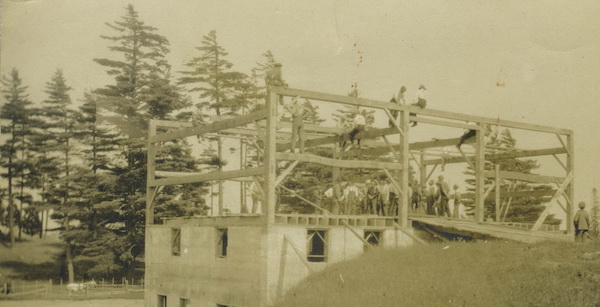
My mother, invalided as a child with an immobilizing hip cast, watched these trees in heavy summer heat from her bedroom window; their tops nodding gently in lighter currents of air above. When she was able to walk, she spent long hours in the grove, seated on a boulder that served as a fairy throne. There, free of sisters and bustle, she raised her scepter.
Later, I explored that grove’s edges for butterflies found abundantly there and not elsewhere—nymphs with luminescent wing-borne eyes and spots of color, admirals, tiger and black swallowtails, mourning cloaks. They flitted among plants and flowers likewise unique to the westward-facing hummock of sand on which the trees stood; a micro-climatic relic of the post-glacial waxing of Lake Erie’s vanished ancestor.
As a young child, I would also watch droning aircraft claw for height from the west, out of Detroit or Cleveland, or coming from the other direction, from Buffalo, or from US Air Force bases in central and western New York State.
At night, I would sometimes hear a new and increasingly frequent sound. Like the rumbling of propeller-driven transports, it came from the sky, but it filled the night with something more hostile, sounding like a cross between heavy wind and thunder. It would go on and on, especially on damp nights, and it came from the east.
I must have made the informational connections to identify the sound very early; perhaps when my dad and another man put down their tools for a moment, pointed upward and said, “There’s a jet!” I followed the white crayon mark across the sky to its source; a tiny, grey shape with impossibly-raked wings. I’d hear the sound slowly build, and—far more slowly—fade.
At night, when I heard it, I covered my ears with a pillow.
At some point, I must also have connected the word “bombers” to that sound, though, of course, by then, the gas turbine engine was taking the civilian airline industry by storm, as it earlier had the military. And, already, the task of delivering nuclear weapons to their appointed destinations was being apportioned to ballistic missiles as well as to aircraft. But “bomber” was the term that stayed in the popular lexicon, along with the term “atomic age,” “atomic bomb,” or just “The Bomb”.
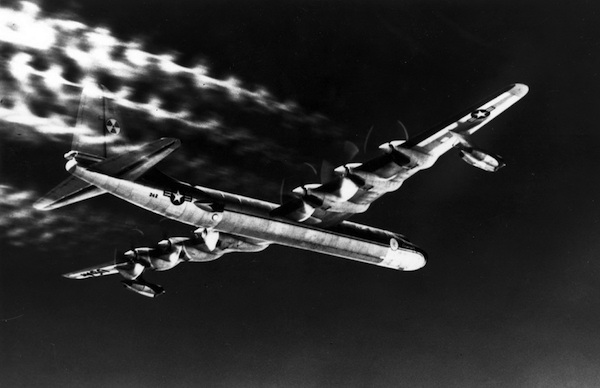
My awareness of the specific threat posed by nuclear weapons dawned slowly, at least in retrospect. I remember the day of the Kennedy assassination (it was the first time I’d heard that word), but not the Cuban missile crisis. But through the decade of the 60s, I began to feel a growing weight of foreboding.
I recall plotting out the blast, fire, and lethal radiation zones around the nearest urban areas. As a very young child, I had delighted in trips to the city: the myriad of lights, the abundance of traffic, the railways, the tall buildings then lit up all night long. By the end of the 60s, I had come to think of them as danger zones to be avoided, or worse, as ruins-in-the-making. It was as if everywhere I looked, a charred overlay settled on the streets. I worried that the prevailing winds over our house came from Detroit, less than a couple of hundred miles away.
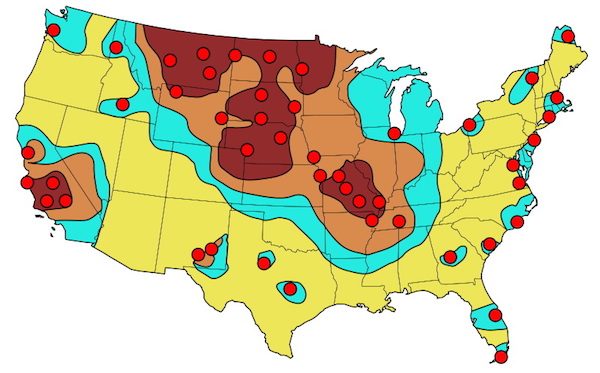
However, there was one moment in which these changes in my world, and in me, were crystallized. That was the day in 1968 when The War Game, a stark black-and-white documentary-style movie, made in Britain but withdrawn from public viewing there, was shown in my school gym. It laid out the stages and consequences of a near-future nuclear war (sparked by conflict in a then-divided Berlin) in unsparing detail. The mass moaning of the blinded, injured, and dying in the soundtrack never left me. Like the noise in the air, it went on and on. I imagined the familiar places in which I lived and studied as if they were targets, seen from above. I have not since been able to think of the future without a sense of something ominous, however tamped down and suppressed, underlying my most sanguine moments of anticipation.
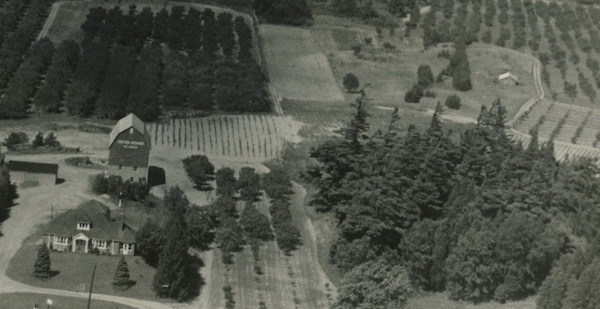
Rebecca Onion writes that, for activist liberals in the 1980s, the psychological damage this fear was alleged to visit on children, and the sheer poignancy of their resultant anxiety, became emotive rallying-points. Concerns about children fostered two kinds of protectionist discourse; one about the need to shield the very young from disturbing parental and media messages; another about the need to eliminate the ultimate cause of alarm: nuclear weapons themselves, and the mutual suicide of civilizations that they invoked. On the right, children’s sensibilities, and disquiet about them, were discounted as useless for realist policy making. Useless, or worse than useless: irrelevancies that, like toddlers underfoot, got in the way of hard-headed choice-making and directive confidence.
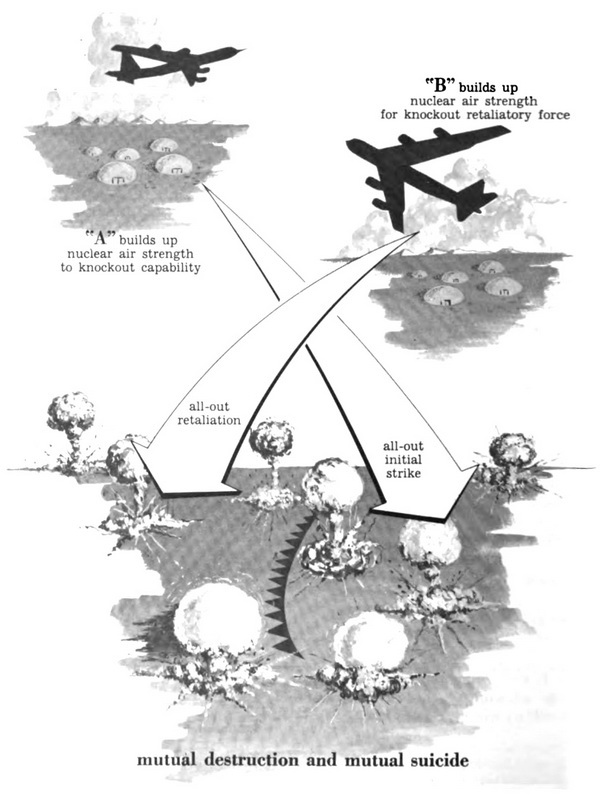
It’s easy to disparage those who worried about the sensitivities of children, given the danger of world-ending war, accidental or intentional. But perhaps a little too easy. Childhood anxiety, especially if caused by stressors which neither children nor parents can control, may set up some significant proportion of children for later-life psychosocial and, perhaps, political difficulties.
Clearly, though, the foremost question then as now for many anti-nuclear activists was how to motivate and organize people to confront directly the threat of nuclear weaponry and their associated human and technological systems. Childhood trauma thus provided a rallying-point for adult activism.
As for the children themselves, did those who watched The Day After end up becoming more engaged than their 50s counterparts? According to Onion, the evidence is at best unclear. The movie itself became a media phenomenon, and sparked wide discussion. But studies of children who watched it did not show unambiguous evidence of more activist attitudes or deeper knowledge of nuclear issues.
It would be interesting to ask a somewhat different question: whether a cumulative exposure to messages about the nuclear threat had other effects, harder to isolate: an abraded mental landscape; a re-layered sedimentary overburden of dread.
Looking back on my own childhood, I would not now wish to have been brought up in an impenetrable cocoon of happy ignorance. But I would joyfully have traded away a waste of time and energy, and a murder of joy and spontaneity consequent to a slowly-growing pall of anxiety. I suspect I was more receptive to it than many of my cohort, but I know now that I had many unacknowledged companions. (Those who have responded to earlier versions of this column invariably told me stories of their own Zaitchik moments.)
To be clear, I am not arguing that exposure to images of nuclear annihilation had a direct cause-effect relation to the state of our individual psyches. Rather, I would propose that such images were elements of a collective psychological and cultural environment in which progress wrestled with doom; fear with aspiration. An environment in which souls were shaped. Nuclear weapons posed a collective existential threat and made that threat clear in a way it had not been, perhaps since the Black Death. They made that threat clear to a secular age. No plague would deliver us before a divine throne; instead, The Bomb would deliver us all, some instantly, others slowly, to nothingness. We would not be around to witness our ultimate fate or to know our Apocalypse. Progress and Reason, turning on us, would turn on meaning itself.
In face of that prospect, the culture of nuclear dread birthed a culture of diversion. A depressive helplessness could be held at bay by a determination to trust those in charge of the nuclear arsenals and, in personal life, to be happy, to cultivate the power of positive thinking; to consume and not to worry overmuch about being consumed. Worry, or “nerves,” augured against successful living. One could take responsible precautions, of course; children could learn The Drill; parents could excavate a dual-purpose recreation room and bunker (read Bomb Shelter).
![]()
Today, the consequences of climate change present a similar threat, and generate similar responses.
Climate scientists moderate their messages so as not to turn off readers by being too depressing; we imagine that changing our personal transportation or cultivating ”green” consumption habits might help stave off climate disaster even as we suspect that such measures are ultimately as effective as classroom nuclear-attack drills would have been. Climate change, of course, is a more gradual prospect, and has therefore been easier not to notice. It is also more difficult to grasp because its geopolitical consequences (which still include the possibility of nuclear war) will lead (unpredictably) to other consequences. For the first time in two centuries of population-management, governments will face unmanageable populations of the displaced.
For those who chose not to avoid their prospect, nuclear weapons became things to think with.
In an age of nuclear anxiety, The Bomb also mediated affect and imagination. Children as well as adults experienced that mediation, but children themselves became things that adults thought with, felt with, and imagined with . . . among themselves.
Surely it is worth asking if, how, or under what circumstances a culture of anticipated trauma and dread might have the power to lay waste to the mental and emotional landscapes of adults-in-becoming, as bombs and bulldozers do to geographies. And to ask how this waste could lead, in the lives of children and the later adults they gestate, to forgetting, diversion, or maybe, just maybe, to rebellion.
Could action be a third, misrecognized child of dread; one that could displace paralysis or obsession?
Can experience of loss focus and empower non-repetitive responses to loss? If so, how and under what circumstances, and would the response be sufficient to its task?
Historically, did the experience of nuclear dread make any of us affected by it more “activist”; inspire us to become more informed than we would have been otherwise? Perhaps the answer depends on how we ask. It certainly helped focus questions about what to question.
So too, for me, did the eventual murder of the grove that had towered over my childhood: a small and tedious annihilation by chainsaw and excavator, abetted by dreams of realizable value in lumber and sand.
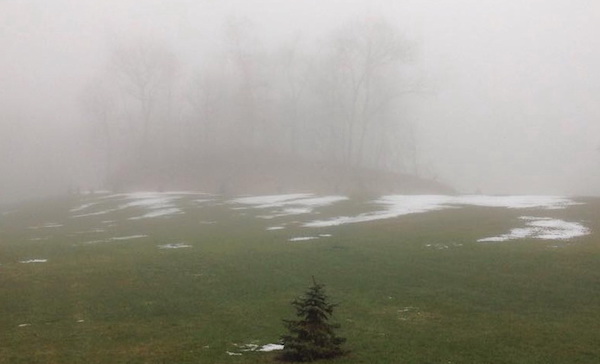
Long before that farm grove and its knoll fell to chainsaw and excavator, they were already dead in my mind.
Yet matters are not that simple. The pain of that anticipated and eventual death was born of attachment. And, perhaps, the sense of threat I felt, both within the landscape of my everyday childhood, and to that landscape, intensified that attachment. I still hoard memories and images of the grove and, as a dreamscape, it also haunts me. I carry the dead and give it life. What kind of life?
To reflect on the child who grew from foreboding into dislocation, rather than on the lost object itself, shifts the terms of reflection.
I carried with me a dream of a tactile, stable, and recognizable place; a place in which I was enveloped; a place of physical proximity and continuity. The dream emerges now enveloped by a caul of pastness, but the umbilicus is cut. Child and place drift apart even as one reaches for the other. In the course of this present reflection, I have picked up and carried the child birthed unwillingly into a cold separation from that place. A child both remembered and present; who merges with its adult carrier.
Memorialization seeks to reconnect; to identify with what is lost and to recover it. Paradoxically, and perhaps inevitably, it also covers the lost with burial earth. To memorialize is to name a contrastive absence. That contrast can fuel a political response; it can say, this now is not what was, and that is a problem. But this can turn toward a certain kind of nostalgia and, if it does, its politics can become impossible and toxic.
In seeking to return to something that is no more, it will end up constructing, by force if necessary, the never-was.
But a politics energized by loss can, perhaps, become a different matter.
I know now that my childhood landscape was already populated by un-noticed shadows; that what I look back on as stability and continuity was founded on prior dislocation; on a clearance and historical erasure that allowed for a discontinuous reconstruction called settlement. I can still name a time and place, and say, See! Things were different then! However, I can no longer see it as untouched by time, a point from which time only departs. The knives of anxiety, dislocation and property-development have carved difference into the decades repeatedly; more than one disjunction can emerge into visibility. However, these severances do not result from a blinding instant, and their gradual transformation into loss can be as difficult to capture or represent as a nuclear flash, if for different reasons. And, in the end, visibility alone doesn’t give difference power. But is it a start?
To become mesmerized by the loss itself and to seek endlessly for the key to how it occurred would render a politics of loss as incapable as a politics of nostalgia. Perhaps what’s needed, then, is a politics not of, but from both nostalgia and lostness; that works forward from severance toward new ways to gather ourselves and our social lives together. What would it actualize? Something different both from an anxious “now” and from a past in which that “now” might be tempted to bury its head. It would need to be actualizing; neither in service to a lost past nor in bondage to an anxious present. But also not, not, not in thrall to some pure future or clean slate from which the carried-forward mess and embarrassment that populates our present has been bleached out by some fierce, judgmental light.
We need to carry our baggage with us, and feel the drag of its difference on the angry utopianism that can deny the sadness in which it germinates. It is that drag which may keep pulling open the necessary wounds of awareness: our eyes, ears, noses, palates, porous skin.
In the end, perhaps what anxiety can teach is a double-edged politics of vulnerability, a vulnerable hope that begins from attachment but refuses escapism; a vulnerable awareness that still dreams an end to fear; uncertain questions that open to further questions. My exposure to The War Game was long preceded by a slow realization of danger. It worked according to its own aural and visual gestalt, manifest now and then in imagined figures, fears, and obsessions, but also in moments of terrible clarity. Admonitions not to worry so much; to go out and play, are the wrong medicine for a child in such moments. But how, especially to a child, does an adult both admit a kind of helplessness and encourage hope?
About the time that I began to notice the hollow, spreading sonic reverberation that periodically filled the night; about the time also that I began to associate it with falling bombs, I began to dream of the sky above the ancient trees that formed my horizon. In these dreams, the tall pines barred from sight the cause of the hostile noise from the east.
Until, over the treetops, they appeared. The bombers.
And I would wake up.
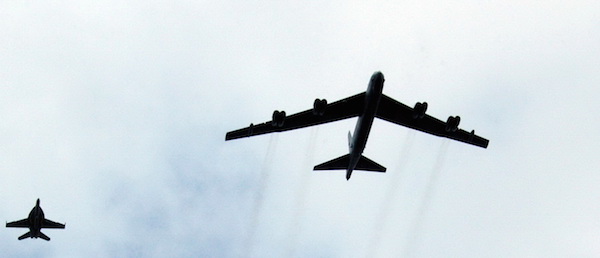
![]()
Glossary
*Facture: the quality of the execution of a painting; an artist’s characteristic handling of the paint.
![]()
Acknowledgement
An earlier version of this column appeared in Space & Culture, a blog associated with the City-Region Studies Centre at the University of Alberta and curated by Rob Shields (with assistance from my colleague and friend, Michael Granzow).
![]()
Illustrations
Image 1. Author’s collection. The grove, about 1933.
Image 2. Photo courtesy of National Nuclear Security Administration / Nevada Field Office, via Wikimedia Commons: http://en.wikipedia.org/wiki/Castle_Romeo.
Image 3. “Political Ad: ‘Daisy Ad’ Johnson, 1964,”NBC Learn: https://static.nbclearn.com/files/nbcarchives/site/pdf/2362.pdf.
Image 4. Author’s collection. Erection of barn utilizing pine beams, 1917. Pine grove in background.
Image 5. Convair NB-36H producing contrails in flight. The NB-36H was a research one-off (for testing an in-flight nuclear reactor) of the Convair B-36; the first American bomber purpose-built to carry a nuclear payload. University of Washington Libraries–Digital Collections, via Wikimedia Commons: http://upload.wikimedia.org/wikipedia/commons/1/1b/NB-36H_producing_contrails_in_flight.jpg.
Image 6. Primary target locations for hypothesized Soviet nuclear strikes during the 1980s. The darkest color indicates the most lethal radioactive fallout while the lightest (yellow) depicts relatively fallout-free zones.Federal Emergency Management Agency (FEMA, 2011), based on an image published in 1984. Via Wikimedia Commons: http://commons.wikimedia.org/wiki/File:US_nuclear_strike_map.svg
Image 7. Author’s collection, n.d. (early 1950s?); detail showing pine grove, from a photo by Harold B. Stewart.
Image 8. “Nuclear Air War, Pattern I. Coextermination.” In Stefan T. Possony, “Communism and Air Power; A Survey of Possible Communist Air Strategies,” Air University Quarterly Review(1954).Via Wikimedia Commons: http://commons.wikimedia.org/wiki/File:Nuclear_Air_War,_Pattern_I_Coextermination.jpg
Image 9. Remnants of the grove and its hill, December 2014. Taken by author.
Image 10. Detail from a US Navy photo by Jimmy C. Pan, of a USAF B-52 Stratofortress and other Air Force and Navy aircraft performing a formation flyover during Exercise Valiant Shield, 2006.Via Wikimedia Commons: https://commons.wikimedia.org/wiki/B-52_Stratofortress#
![]()
References
The Day After. See IMDb, “The Day After (1983)”.
“. . . paradoxically photographic… the image of a man was fixed in the concrete of a sidewalk . . .” See Matthew J.X. Doyle, “黒い火(Black Fire),” Hypocrite Reader,issue 35 (Dec. 2013).
“McLuhan’s characterization of electric light as pure information . . .” See Marshall McLuhan, Understanding Media (McGraw-Hill, 1964), pp. 23-24: “The electric light is pure information. It is a medium without a message, as it were, unless it is used to spell out some verbal ad or name. This fact, characteristic of all media, means that the ‘content’ of any medium is always another medium. The content of writing is speech, just as the written word is the content of print, and print is the content of the telegraph.”
By extension, could one also suggest that narratives of unrepresentable horror might act, like light, to render the era of The Bomb transparent? We see the nuclear holocaust in fictive or documentary representations always at a certain remove. The movies don’t actually tell us to do this. But, nonetheless, perhaps the remove induces a strange sort of commonsense clarity. We don’t so much see the televisual narratives themselves as much as we see the world through them: our consciousness becomes their lived after-effect. We see nuclear pasts (Hiroshima, Nagasaki, the bomb tests), and possible nuclear futures, less as they appear in the narratives we watch than as we see through them, or from within them —in ways that may be said to render some of us transfixed and passive, and others active in compensatory or aggressive ways. This is a reversal of what Jean Baudrillard was driving at in The Transparency of Evil (Verso, 2009), but I like to think it’s in the same spirit as his argument.
“. . . in ways similar to present-day controversy about the affective consequences of climate-change messaging.” See “Climate Change and Mental Health,” Psychologists for Social Responsibility. See also Madeleine Thomas, “Climate depression is for real. Just ask a scientist,” Grist (28 October, 2014).
“. . . strip children of their innocence . . .” See Wikipedia, “Daisy (advertisement)”. See also one of several YouTube videos of this political advertisement at https://www.youtube.com/watch?v=dDTBnsqxZ3k.
“. . . duck and cover drills . . .” See “Duck and Cover” (video) on YouTube: https://www.youtube.com/watch?v=gqCxcnhNAeQ
“. . . blast wave of logging . . .” See Raymond Quenneville, “Harvesting the Stands of Eastern White Pine,” Encyclopedia of French Cultural Heritage in North America.
“. . . colonization of a landscape. . .” See Douglas Glover, “Long Point: A Geography of the Soul,” NuméroCinq (2011).
“The War Game” See Peter Watkins Films.
“may set up some significant proportion of children for later-life psychosocial, and perhaps political difficulties . . .” See Gabor Maté, When the Body Says No: The Cost of Hidden Stress (Vintage Canada, 2004) and “Further Reading” section below.
“. . . dreams of realizable value.” See in relation to this point, but also in tension with it, a short but powerful reflection by Walter Benjamin, “The Destructive Character” (1931). Instead of relating destruction back to the profit motive, Benjamin characterized the urge to clear space, erase, make way, as an element of the modern character in its own right.
“Climate scientists moderate their messages so as not to turn off readers by being too depressing . . .” David Roberts, “The awful truth about climate change no one wants to admit,” Vox Science & Health, May 2013.
“. . . worth asking if, how, or under what circumstances a culture of anticipated trauma and dread might have the power to lay waste to the mental and emotional landscapes . . .” A vast literature, both scientific and popular, has opened up on the subject of post-traumatic stress disorder (PTSD) in the past 30 years. See “Further Reading” below.
![]()
Further Reading
For accounts of memorialization of the Hiroshima bombing, of the manifestations of “The Bomb” in popular culture, and of the ways in which both Soviet and American leaders used emotionally charged images of endangered children to consolidate support for domestic, foreign and military policies, see the following:
Michael A. Amundson and Scott C. Zeman, eds., Atomic culture: how we learned to stop worrying and love the bomb (University Press of Colorado 2004).
Paul Boyer, By the Bomb’s Early Light (Pantheon, 1985). An early look at the cultural fallout of the atomic age in America.
“Cold War Culture: The Nuclear Fear of the 1950s and 1960s.” CBC Digital Archives: http://www.cbc.ca/archives/topic/cold-war-culture-the-nuclear-fear-of-the-1950s-and-1960s.
Alice L George, Awaiting Armageddon: how Americans faced the Cuban Missile Crisis (University of North Carolina Press, 2003).
Robert A Jacobs, Filling the hole in the nuclear future: art and popular culture respond to the bomb (Lexington books 2010).
Robert A. Jacobs, The Dragon’s Tail: Americans Face the Atomic Age, (University of Massachusetts Press, 2010). See especially the chapter, “Atomic Kid: American Children vs. the Bomb.”
John O’Brian, ed., Camera Atomica AGO/Black Dog Press, 2015.
Margaret E. Peacock, Innocent Weapons: The Soviet and American Politics of Childhood in the Cold War (University of North Carolina Press, 2014).
David Ropeik, “The Rise of Nuclear Fear: How We Learned to Fear the Radiation,” Scientific American Blogs, June 15, 2012.
Kenneth D Rose, One nation underground: the fallout shelter in American culture (NYU Press, 2004).
Eric Schlosser, Command and Control: Nuclear Weapons, the Damascus Accident, and the Illusion of Safety (Penguin Books, 2014).
Eric G. Swedin, ed., Survive the bomb: the radioactive citizen’s guide to nuclear survival (MBIPublishing/Zenith Press, 2011).
Allan M. Winkler, Life Under a Cloud: American Anxiety About the Atom (Oxford, 1993). On forms of political, scientific, and artistic mobilization in response to the threat of nuclear warfare.
Lisa Yoneyama, Hiroshima Traces: Time, Space, and the Dialectics of Memory (University of California Press, 1999).
Since the 1950s, vast numbers of technical and popular depictions of the effects of nuclear war have been published. Many are readily available online. Here are a few examples:
Stefan T. Possony, “Communism and Air Power; A Survey of Possible Communist Air Strategies,” Air University Quarterly Review(1954).
“A Nuclear Weapon Over Detroit or Leningrad: a Tutorial on the Effects of Nuclear Weapons,” ch. 2 in The Effects of Nuclear War, Office of Technology Assessment (1979).
“25-Megaton Air Blast: Pressure Damage,” Race for the Superbomb, PBS, American Experience, 1999.
“Nuclear Weapon Effects Calculator,” Stardestroyer.net, 2003; Yes, you can actually go online, enter a megatonnage of interest, and get calculations for these: thermal radiation radius (3rd degree burns); air blast radius (widespread destruction); air blast radius (near-total fatalities); ionizing radiation radius (500 rem); fireball duration; fireball radius (minimum); fireball radius (airburst); fireball radius (ground-contact airburst). An obsessive’s dark paradise.
For discussions on the mental-health effects of climate-change messaging, see these:
Marissa Fessenden, “Even Climate Scientists Are Getting Depressed by Our Lack of Progress,” Smithsonian.com, November 2014.
Allison Guerette and John Wihbey, “Parenting in an Age of Climate Change: Communicating the Tough Truths to Children,” Yale Climate Connections, April 2013.
The Psychological Effects of Global Warming on the United States: And Why the U.S. Mental Health Care System is Not Adequately Prepared, National Wildlife Federation, 2012.
Diane Toomey, “Finding a Better Message on The Risks of Climate Change,” Environment 360, September 2013.
Individual and collective traumas, and their after-effects, are of interest not only in medicine and psychology, but also in history, sociology, anthropology, literature, cultural studies, and philosophy. I hardly need add that trauma has been the subject of countless works of art in the past century, as well as of debates about the limits of artistic representation, and about the limits of art, itself. These concerns date back to the cultural and psychological shocks of the First World War. But it was in the aftermath of the Second that “stress” entered the nomenclature of medicine and medical journalism, linked to ideas about resilience. An entry on “Gross Stress Reaction” was included in the first edition (1951) of the Diagnostic and Statistical Manual (DSM-I).
Among the classic postwar studies of traumatic stress were these:
Viktor Frankl, Man’s Search for Meaning (Beacon, 2006). Frankl developed logotherapy out of his concentration-camp experiences, proposing that resilience under extreme circumstances depended on an ability to imagine one’s future in terms of an ultimate meaning. The book was published in German (under a different title) in 1946, and an English edition followed in 1959.
R. R. Grinker and J. P. Spiegel, “Brief psychotherapy in war neuroses,” Psychosomatic Medicine, 6 (1944): 123–131.
V. A. Kral, “Psychiatric observations under severe chronic stress,” American Journal of Psychiatry, 108 (1951): 185–192.
Hans Selye, “Stress and psychiatry,” American Journal of Psychiatry 113 (1956): 423–427.
Recent histories of the concept of stress, and of the diagnostic label PTSD, include these:
Nancy C. Andreasen, “Post-traumatic Stress Disorder: A History and a Critique,” Brainline.org.
Mark Jackson, The Age of Stress: Science and the Search for Stability (Oxford, 2013).
More recent medical research into PTSD is far beyond my ability to compass. The following represent only my amateur interest in the possibility that trauma and susceptibility to stress could be transmitted across the life-cycle, and across generations, by biological as well as socio-cultural means:
T. B. Franklin, H. Russig, I. C. Weiss, J. Gräff, N. Linder, A. Michalon, S. Vizi and I. M. Mansuy, “Epigenetic Transmission of the Impact of Early Stress Across Generations,” Biological Psychiatry(August 2, 2010).
K. Gapp, A. Jawaid, P. Sarkies, J. Bohacek, P. Pelczar, J. Prados, L. Farinelli, E. Miska and I. M. Mansuy, “Implication of sperm RNAs in transgenerational inheritance of the effects of early trauma in mice,” Nature Neuroscience 17 (2014), 667–669.
Gabor Maté, When the Body Says No: The Cost of Hidden Stress, Vintage Canada (2004). Maté argues that intrauterine and early childhood stress increases susceptibility to various disorders in later life. His views are influenced by clinical work with some of the most disadvantaged residents of Vancouver, Canada.
Tori Rodriguez, “Descendants of Holocaust Survivors Have Altered Stress Hormones: Parents’ traumatic experience may hamper their offspring’s ability to bounce back from trauma,” Scientific American Mind , 26(2), (Feb 12, 2015).
U. Schmidt, F. Holsboer and T. Rein, “Epigenetic aspects of post-traumatic stress disorder,” Disease Markers, 30(2-3), (2011),77-87: on Pubmed.
Roseanne Zhao, “Child abuse leaves epigenetic marks,” Genome (National Human Genome Research Institute), (2013).
There has been intense discussion in the humanities and social sciences about individual and collective experiences of anxiety and trauma, how these are remembered, and their effects over time. Added to this is a vast literature on the actuality of mass death and on its terrorizing function in the modern era: on the forces that impel it and on the forms of language and speech that shape, incite, or rationalize it.
Nuclear weaponry is not genocidal in a targeted way, but it shares with genocide an impulse to obliterate and (after the radiation dissipates, and if anyone is still alive) to begin anew. Essential to an understanding of that impulse as a specific kind of social technology and communicative practice, rather than merely an outcome of “human nature,” is Michel Foucault’s discussion of biopower, which began with this classic essay:
Michel Foucault, “Right of Death and Power Over Life,” in Foucault, The History of Sexuality: An Introduction (Vintage, 1990).
On questions of traumatic cultural memory, the limits of representation, survival, and witnessing, these are essential reading:
Marianne Hirsch, The Generation of Postmemory: Writing and Visual Culture After the Holocaust (Columbia, 2012).
Primo Levi, The Drowned and the Saved (Vintage, 1989).
Elaine Scarry, The Body In Pain: The Making and Unmaking of the World (Oxford, 2003). On pain as a destroyer of language (can depression and anxiety be called forms of pain in Scarry’s sense?).
W. G. Sebald, Austerlitz (Modern Library, 2011).
Susan Sontag, Regarding the Pain of Others (Picador, 2004). A robust defense of the political and moral possibilities of representation.
And, finally, a sampler of additional studies linking trauma, memory, haunting, and questions of representation, see these:
Sara Ahmed, The Cultural Politics of Emotion (Routledge, 2004).
Paul Antze and Michael Lambek, eds., Tense Past: Cultural Essays in Trauma and Memory (Routledge, 1996).
Cathy Caruth, Unclaimed Experience: Trauma, Narrative, and History (Johns Hopkins, 1996).
Paul Connerton, The Spirit of Mourning: History, Memory and the Body (Cambridge, 2011). A study of how a collective memory of traumatic events can be inscribed within bodies.
Ann Cvetkovich, An Archive of Feelings (Duke, 2003).
Jenny Edkins, Trauma and the Memory of Politics (Cambridge, 2003).
Avery Gordon, Ghostly Matters: Haunting and the Sociological Imagination (Minnesota, 2008). How everyday lives and places, and conventional ways of seeing, are “haunted” by the presence of past events and social configurations.
Owain Jones and Joanne Garde-Hansen, eds., Geography and Memory: Explorations in Identity, Place and Becoming (Palgrave Macmillan, 2012).
Anton Kaes, Shell Shock Cinema: Weimar Culture and the Wounds of War (Princeton, 2011).
Dominick LaCapra, Writing History, Writing Trauma (Johns Hopkins, 2014).
Ruth Leys, Trauma: A Genealogy (Chicago, 2000).
Paul Ricoeur, Memory, History, Forgetting (Chicago, 2006).
Saskatoon Public School Division, “Intergenerational Residential School Effects”. The legacy of Indian Residential Schools is a multigenerational trauma that haunts (in different ways) both Canada’s settler culture and its First Nations. This is a story-collecting project which seeks to acknowledge that.
Gabriele Schwab, Haunting Legacies: Violent Histories and Transgenerational Trauma (Columbia, 2010).
